-
EXECUTIVE SUMMARY
-
MARKET INTRODUCTION
-
Definition
-
Scope of the Study
- Research Objective
- Assumptions
- Limitations
-
RESEARCH METHODOLOGY
-
3.1.
-
Overview
-
Data Mining
-
Secondary Research
-
Primary Research
- Primary Interviews and Information Gathering Process
- Breakdown
- Forecasting Model
-
of Primary Respondents
-
Market Size Estimation
- Bottom-Up Approach
- Top-Down Approach
- Data Triangulation
-
Validation
-
MARKET DYNAMICS
-
Overview
-
Drivers
-
Restraints
-
Opportunities
-
MARKET FACTOR ANALYSIS
-
Value Chain Analysis
-
Porter’s Five Forces Analysis
- Bargaining Power of Buyers
- Threat of Substitutes
- Intensity
- COVID-19 Impact Analysis
- Market Impact Analysis
- Regional Impact
- Opportunity and Threat Analysis
-
3.14.1.
-
Bargaining Power of Suppliers
-
3.14.3.
-
Threat of New Entrants
-
of Rivalry
-
GLOBAL
-
GASKETS AND SEALS MARKET, BY APPLICATION
-
Overview
-
Aerospace
-
Automotive
-
Electronics
-
Oil and Gas
-
Power Generation
-
Other Applications (Industrial)
-
GLOBAL GASKETS AND SEALS MARKET,
-
BY PRODUCT
-
Overview
-
Gaskets
- Metallic Gaskets
- Rubber Gaskets
- Cork Gaskets
- Non-asbestos Gaskets
- Spiral Wound Gaskets
- Others Gaskets (Semi-Metallic Gasket)
- Seals
- Shaft Seals
- Molded Seals
- Other Seals (Fork Seal and Piston Seal)
-
4.10.10.
-
Motor Vehicle Body Seals
-
GLOBAL GASKETS AND SEALS MARKET, BY MATERIAL
-
Overview
-
5.2.
-
Fiber
-
Graphite
-
PTFE
-
Rubber
-
Other Materials
-
(Metal, Cork, Polymers and Felt)
-
GLOBAL GASKETS AND SEALS MARKET, BY REGION
-
Overview
-
North America
- US
- Canada
- Germany
- France
- UK
- Italy
- Spain
- Rest of Europe
- Asia-Pacific
- India
- Japan
- South Korea
- Rest of Asia-Pacific
- Rest of the World
- Africa
- Latin America
-
5.1.3.
-
Europe
-
5.1.11.
-
China
-
5.1.15.
-
Australia
-
5.1.18.
-
Middle East
-
COMPETITIVE LANDSCAPE
-
Overview
-
Competitive Analysis
-
Market Share Analysis
-
Major Growth Strategy in the Global Gaskets and Seals Market,
-
Competitive
-
Benchmarking
-
Leading Players in Terms of Number of Developments in the
-
Global Gaskets and Seals Market,
-
Key developments and Growth Strategies
- New Product Launch/Service Deployment
- Merger & Acquisitions
- Joint Ventures
- Major Players Financial Matrix
- Major Players R&D Expenditure.
-
6.7.5.
-
Sales & Operating Income, 2022
-
COMPANY PROFILES
-
AMG Sealing Limited
- Company
- Financial Overview
- Products Offered
- SWOT Analysis
- Key Strategies
- Company Overview
- Financial Overview
- Products Offered
- Key Developments
- SWOT Analysis
- Key Strategies
- FREUDENBERG SEALING TECHNOLOGIES
- Financial Overview
- Products Offered
- Key Developments
- SWOT Analysis
- Key Strategies
- Cooper Standard
- Company Overview
- Financial Overview
- Products Offered
- Key Developments
- SWOT Analysis
- Key Strategies
- ElringKlinger AG
- Company Overview
- Financial Overview
- Products Offered
- Key Developments
- SWOT Analysis
- Key Strategies
- FLOWSERVE CORPORATION
- Company Overview
- Financial Overview
- Products
- Key Developments
- SWOT Analysis
- Key
- Garlock
- Company Overview
- Financial
- Products Offered
- Key Developments
- Key Strategies
- An Enpro Industries, Inc.
- Company Overview
- Financial Overview
- Products
- Key Developments
- SWOT Analysis
- Key
- Dätwyler Holding Inc.
- Company Overview
- Financial Overview
- Products Offered
- Key Developments
- SWOT Analysis
- Key Strategies
- John Crane
- Financial Overview
- Products Offered
- Key Developments
- SWOT Analysis
- Key Strategies
- KLINGER Holding GmbH
- Company Overview
- Financial
- Products Offered
- Key Developments
- Key Strategies
- Phelps
- Company
- Financial Overview
- Products Offered
- SWOT Analysis
- Key Strategies
- Company Overview
- Financial Overview
- Key Developments
- SWOT Analysis
- Dechengwang
- Company Overview
- Products Offered
- Key Developments
- SWOT Analysis
- Key Strategies
- IGP Engineers Private
- Company Overview
- Financial Overview
- Key Developments
- SWOT Analysis
- Saunders
- Company Overview
- Products Offered
- Key Developments
- SWOT Analysis
- Key Strategies
- SKF
- Financial Overview
- Products Offered
- Key Developments
- SWOT Analysis
- Key Strategies
- Smiths Group plc
- Company Overview
- Financial
- Products Offered
- Key Developments
- Key Strategies
- Trelleborg AB
- Financial Overview
- Products Offered
- Key Developments
- SWOT Analysis
- Key Strategies
- Tenneco Inc.
- Company Overview
- Financial Overview
- Products Offered
- Key Developments
- SWOT Analysis
- Key Strategies
-
Overview
-
7.1.4.
-
Key Developments
-
7.1.7.
-
BRUSS Sealing Systems GmbH
-
7.1.15.
-
Company Overview
-
Offered
-
Strategies
-
Overview
-
7.1.47.
-
SWOT Analysis
-
Offered
-
Strategies
-
7.1.64.
-
Company Overview
-
Overview
-
7.1.75.
-
SWOT Analysis
-
Overview
-
7.1.81.
-
Key Developments
-
7.1.84.
-
Dana Limited
-
7.1.87.
-
Products Offered
-
7.1.90.
-
Key Strategies
-
7.1.93.
-
Financial Overview
-
Limited
-
7.1.101.
-
Products Offered
-
7.1.104.
-
Key Strategies
-
7.1.107.
-
Financial Overview
-
7.1.113.
-
Company Overview
-
Overview
-
7.1.124.
-
SWOT Analysis
-
7.1.127.
-
Company Overview
-
APPENDIX
-
References
-
Related
-
Reports
-
-
LIST OF TABLES
-
GLOBAL GASKETS AND SEALS MARKET,
-
SYNOPSIS, 2018-2032
-
GLOBAL GASKETS AND SEALS MARKET, ESTIMATES &
-
FORECAST, 2018-2032 (USD BILLION)
-
GLOBAL GASKETS AND SEALS MARKET,
-
BY APPLICATION, 2018-2032 (USD BILLION)
-
GLOBAL GASKETS AND SEALS MARKET,
-
BY PRODUCT, 2018-2032 (USD BILLION)
-
GLOBAL GASKETS AND SEALS MARKET,
-
BY MATERIAL, 2018-2032 (USD BILLION)
-
NORTH AMERICA: GASKETS AND SEALS
-
MARKET, BY APPLICATION, 2018-2032 (USD BILLION)
-
NORTH AMERICA: GASKETS
-
AND SEALS MARKET, BY PRODUCT, 2018-2032 (USD BILLION)
-
NORTH AMERICA:
-
GASKETS AND SEALS MARKET, BY MATERIAL, 2018-2032 (USD BILLION)
-
US:
-
GASKETS AND SEALS MARKET, BY APPLICATION, 2018-2032 (USD BILLION)
-
TABLE 10
-
US: GASKETS AND SEALS MARKET, BY PRODUCT, 2018-2032 (USD BILLION)
-
TABLE 11
-
US: GASKETS AND SEALS MARKET, BY MATERIAL, 2018-2032 (USD BILLION)
-
TABLE 12
-
CANADA: GASKETS AND SEALS MARKET, BY APPLICATION, 2018-2032 (USD BILLION)
-
TABLE
-
CANADA: GASKETS AND SEALS MARKET, BY PRODUCT, 2018-2032 (USD BILLION)
-
TABLE
-
CANADA: GASKETS AND SEALS MARKET, BY MATERIAL, 2018-2032 (USD BILLION)
-
TABLE
-
EUROPE: GASKETS AND SEALS MARKET, BY APPLICATION, 2018-2032 (USD BILLION)
-
TABLE
-
EUROPE: GASKETS AND SEALS MARKET, BY PRODUCT, 2018-2032 (USD BILLION)
-
TABLE
-
EUROPE: GASKETS AND SEALS MARKET, BY MATERIAL, 2018-2032 (USD BILLION)
-
TABLE
-
GERMANY: GASKETS AND SEALS MARKET, BY APPLICATION, 2018-2032 (USD BILLION)
-
GERMANY: GASKETS AND SEALS MARKET, BY PRODUCT, 2018-2032 (USD BILLION)
-
GERMANY: GASKETS AND SEALS MARKET, BY MATERIAL, 2018-2032 (USD BILLION)
-
FRANCE: GASKETS AND SEALS MARKET, BY APPLICATION, 2018-2032 (USD BILLION)
-
FRANCE: GASKETS AND SEALS MARKET, BY PRODUCT, 2018-2032 (USD BILLION)
-
FRANCE: GASKETS AND SEALS MARKET, BY MATERIAL, 2018-2032 (USD BILLION)
-
ITALY: GASKETS AND SEALS MARKET, BY APPLICATION, 2018-2032 (USD BILLION)
-
ITALY: GASKETS AND SEALS MARKET, BY PRODUCT, 2018-2032 (USD BILLION)
-
ITALY: GASKETS AND SEALS MARKET, BY MATERIAL, 2018-2032 (USD BILLION)
-
SPAIN: GASKETS AND SEALS MARKET, BY APPLICATION, 2018-2032 (USD BILLION)
-
SPAIN: GASKETS AND SEALS MARKET, BY PRODUCT, 2018-2032 (USD BILLION)
-
SPAIN: GASKETS AND SEALS MARKET, BY MATERIAL, 2018-2032 (USD BILLION)
-
UK: GASKETS AND SEALS MARKET, BY APPLICATION, 2018-2032 (USD BILLION)
-
UK: GASKETS AND SEALS MARKET, BY PRODUCT, 2018-2032 (USD BILLION)
-
UK: GASKETS AND SEALS MARKET, BY MATERIAL, 2018-2032 (USD BILLION)
-
REST OF EUROPE: GASKETS AND SEALS MARKET, BY APPLICATION, 2018-2032 (USD
-
BILLION)
-
REST OF EUROPE: GASKETS AND SEALS MARKET, BY PRODUCT, 2018-2032
-
(USD BILLION)
-
REST OF EUROPE: GASKETS AND SEALS MARKET, BY MATERIAL,
-
ASIA-PACIFIC: GASKETS AND SEALS MARKET, BY
-
APPLICATION, 2018-2032 (USD BILLION)
-
ASIA-PACIFIC: GASKETS AND SEALS
-
MARKET, BY PRODUCT, 2018-2032 (USD BILLION)
-
ASIA-PACIFIC: GASKETS
-
AND SEALS MARKET, BY MATERIAL, 2018-2032 (USD BILLION)
-
JAPAN: GASKETS
-
AND SEALS MARKET, BY APPLICATION, 2018-2032 (USD BILLION)
-
JAPAN: GASKETS
-
AND SEALS MARKET, BY PRODUCT, 2018-2032 (USD BILLION)
-
JAPAN: GASKETS
-
AND SEALS MARKET, BY MATERIAL, 2018-2032 (USD BILLION)
-
CHINA: GASKETS
-
AND SEALS MARKET, BY APPLICATION, 2018-2032 (USD BILLION)
-
CHINA: GASKETS
-
AND SEALS MARKET, BY PRODUCT, 2018-2032 (USD BILLION)
-
CHINA: GASKETS
-
AND SEALS MARKET, BY MATERIAL, 2018-2032 (USD BILLION)
-
INDIA: GASKETS
-
AND SEALS MARKET, BY APPLICATION, 2018-2032 (USD BILLION)
-
INDIA:
-
GASKETS AND SEALS MARKET, BY PRODUCT, 2018-2032 (USD BILLION)
-
INDIA:
-
GASKETS AND SEALS MARKET, BY MATERIAL, 2018-2032 (USD BILLION)
-
AUSTRALIA:
-
GASKETS AND SEALS MARKET, BY APPLICATION, 2018-2032 (USD BILLION)
-
TABLE 35
-
AUSTRALIA: GASKETS AND SEALS MARKET, BY PRODUCT, 2018-2032 (USD BILLION)
-
TABLE
-
AUSTRALIA: GASKETS AND SEALS MARKET, BY MATERIAL, 2018-2032 (USD BILLION)
-
SOUTH KOREA: GASKETS AND SEALS MARKET, BY APPLICATION, 2018-2032 (USD
-
BILLION)
-
SOUTH KOREA: GASKETS AND SEALS MARKET, BY PRODUCT, 2018-2032
-
(USD BILLION)
-
SOUTH KOREA: GASKETS AND SEALS MARKET, BY MATERIAL,
-
REST OF ASIA-PACIFIC: GASKETS AND SEALS MARKET,
-
BY APPLICATION, 2018-2032 (USD BILLION)
-
REST OF ASIA-PACIFIC: GASKETS
-
AND SEALS MARKET, BY PRODUCT, 2018-2032 (USD BILLION)
-
REST OF ASIA-PACIFIC:
-
GASKETS AND SEALS MARKET, BY MATERIAL, 2018-2032 (USD BILLION)
-
REST
-
OF THE WORLD: GASKETS AND SEALS MARKET, BY APPLICATION, 2018-2032 (USD BILLION)
-
REST OF THE WORLD: GASKETS AND SEALS MARKET, BY PRODUCT, 2018-2032 (USD
-
BILLION)
-
REST OF THE WORLD: GASKETS AND SEALS MARKET, BY MATERIAL,
-
MIDDLE EAST: GASKETS AND SEALS MARKET, BY
-
APPLICATION, 2018-2032 (USD BILLION)
-
MIDDLE EAST: GASKETS AND SEALS
-
MARKET, BY PRODUCT, 2018-2032 (USD BILLION)
-
MIDDLE EAST: GASKETS AND
-
SEALS MARKET, BY MATERIAL, 2018-2032 (USD BILLION)
-
AFRICA: GASKETS
-
AND SEALS MARKET, BY APPLICATION, 2018-2032 (USD BILLION)
-
AFRICA:
-
GASKETS AND SEALS MARKET, BY PRODUCT, 2018-2032 (USD BILLION)
-
AFRICA:
-
GASKETS AND SEALS MARKET, BY MATERIAL, 2018-2032 (USD BILLION)
-
LATIN
-
AMERICA: GASKETS AND SEALS MARKET, BY APPLICATION, 2018-2032 (USD BILLION)
-
TABLE
-
LATIN AMERICA: GASKETS AND SEALS MARKET, BY PRODUCT, 2018-2032 (USD BILLION)
-
LATIN AMERICA: GASKETS AND SEALS MARKET, BY MATERIAL, 2018-2032 (USD
-
BILLION)
-
LIST OF FIGURES
-
RESEARCH PROCESS
-
MARKET
-
STRUCTURE FOR THE GLOBAL GASKETS AND SEALS MARKET
-
MARKET DYNAMICS
-
FOR THE GLOBAL GASKETS AND SEALS MARKET
-
GLOBAL GASKETS AND SEALS MARKET,
-
SHARE (%), BY APPLICATION, 2021
-
GLOBAL GASKETS AND SEALS MARKET, SHARE
-
(%), BY PRODUCT, 2021
-
GLOBAL GASKETS AND SEALS MARKET, SHARE (%),
-
BY MATERIAL, 2021
-
GLOBAL GASKETS AND SEALS MARKET, SHARE (%), BY
-
REGION, 2021
-
NORTH AMERICA: GASKETS AND SEALS MARKET, SHARE (%), BY
-
REGION, 2021
-
EUROPE: GASKETS AND SEALS MARKET, SHARE (%), BY REGION,
-
ASIA-PACIFIC: GASKETS AND SEALS MARKET, SHARE (%), BY REGION,
-
REST OF THE WORLD: GASKETS AND SEALS MARKET, SHARE (%), BY REGION,
-
GLOBAL GASKETS AND SEALS MARKET: COMPANY SHARE ANALYSIS, 2021
-
(%)
-
AMG SEALING LIMITED: FINANCIAL OVERVIEW SNAPSHOT
-
FIGURE
-
AMG SEALING LIMITED: SWOT ANALYSIS
-
BRUSS SEALING SYSTEMS GMBH:
-
FINANCIAL OVERVIEW SNAPSHOT
-
BRUSS SEALING SYSTEMS GMBH: SWOT ANALYSIS
-
FREUDENBERG SEALING TECHNOLOGIES: FINANCIAL OVERVIEW SNAPSHOT
-
FIGURE
-
FREUDENBERG SEALING TECHNOLOGIES: SWOT ANALYSIS
-
COOPER STANDARD:
-
FINANCIAL OVERVIEW SNAPSHOT
-
COOPER STANDARD: SWOT ANALYSIS
-
FIGURE
-
ELRINGKLINGER AG: FINANCIAL OVERVIEW SNAPSHOT
-
ELRINGKLINGER AG:
-
SWOT ANALYSIS
-
FLOWSERVE CORPORATION: FINANCIAL OVERVIEW SNAPSHOT
-
FLOWSERVE CORPORATION: SWOT ANALYSIS
-
GARLOCK: FINANCIAL
-
OVERVIEW SNAPSHOT
-
GARLOCK: SWOT ANALYSIS
-
AN ENPRO
-
INDUSTRIES, INC.: FINANCIAL OVERVIEW SNAPSHOT
-
AN ENPRO INDUSTRIES,
-
INC.: SWOT ANALYSIS
-
DÄTWYLER HOLDING INC.: FINANCIAL OVERVIEW
-
SNAPSHOT
-
DÄTWYLER HOLDING INC.: SWOT ANALYSIS
-
FIGURE 31
-
JOHN CRANE: FINANCIAL OVERVIEW SNAPSHOT
-
JOHN CRANE: SWOT ANALYSIS
-
KLINGER HOLDING GMBH: FINANCIAL OVERVIEW SNAPSHOT
-
KLINGER
-
HOLDING GMBH: SWOT ANALYSIS
-
PHELPS: FINANCIAL OVERVIEW SNAPSHOT
-
PHELPS: SWOT ANALYSIS
-
DANA LIMITED: FINANCIAL OVERVIEW
-
SNAPSHOT
-
DANA LIMITED: SWOT ANALYSIS
-
DECHENGWANG:
-
FINANCIAL OVERVIEW SNAPSHOT
-
DECHENGWANG: SWOT ANALYSIS
-
FIGURE
-
IGP ENGINEERS PRIVATE LIMITED: FINANCIAL OVERVIEW SNAPSHOT
-
IGP
-
ENGINEERS PRIVATE LIMITED: SWOT ANALYSIS
-
SAUNDERS: FINANCIAL OVERVIEW
-
SNAPSHOT
-
SAUNDERS: SWOT ANALYSIS
-
SKF: FINANCIAL OVERVIEW
-
SNAPSHOT
-
SKF: SWOT ANALYSIS
-
SMITHS GROUP PLC: FINANCIAL
-
OVERVIEW SNAPSHOT
-
SMITHS GROUP PLC: SWOT ANALYSIS
-
FIGURE 49
-
TRELLEBORG AB: FINANCIAL OVERVIEW SNAPSHOT
-
TRELLEBORG AB: SWOT ANALYSIS
-
TENNECO INC.: FINANCIAL OVERVIEW SNAPSHOT
-
TENNECO INC.:
-
SWOT ANALYSIS
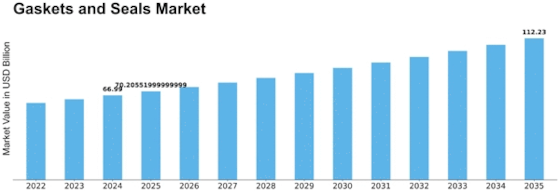

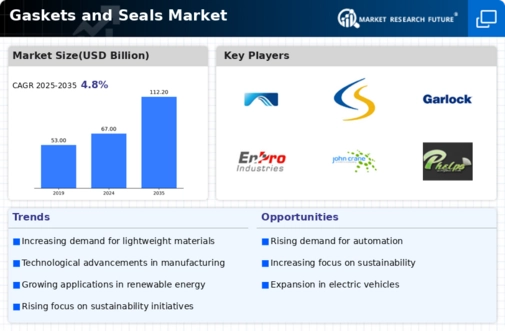

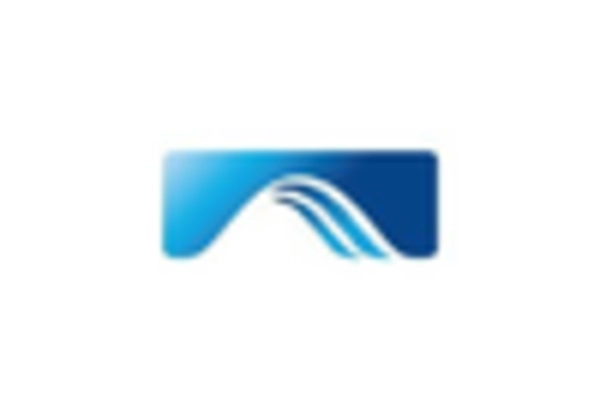
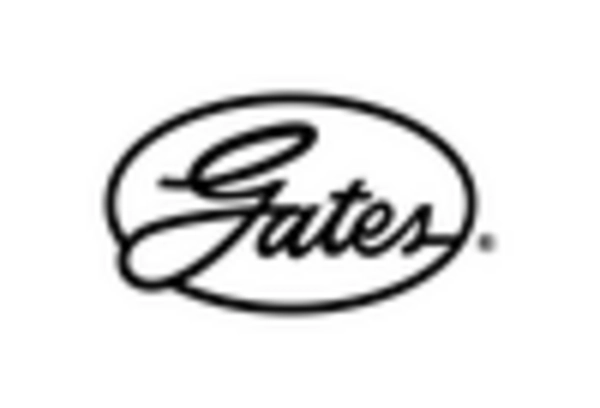
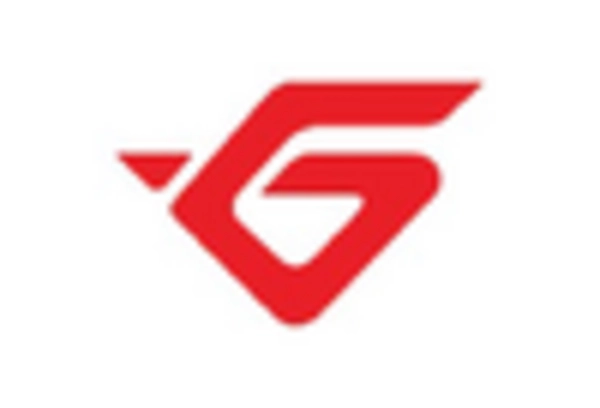
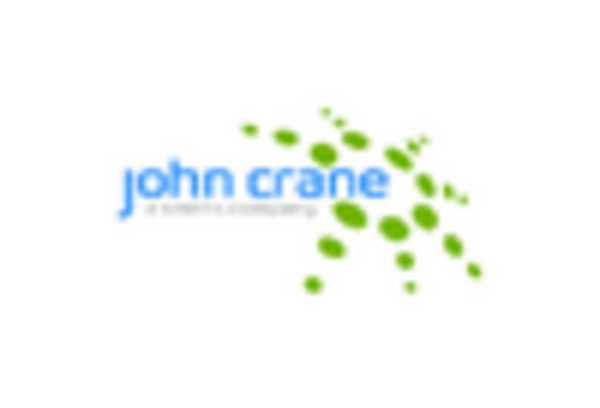
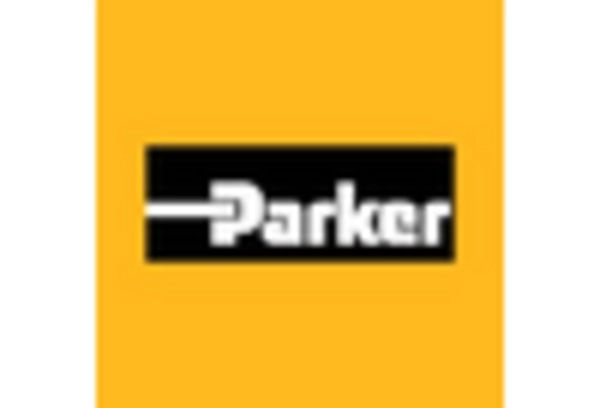
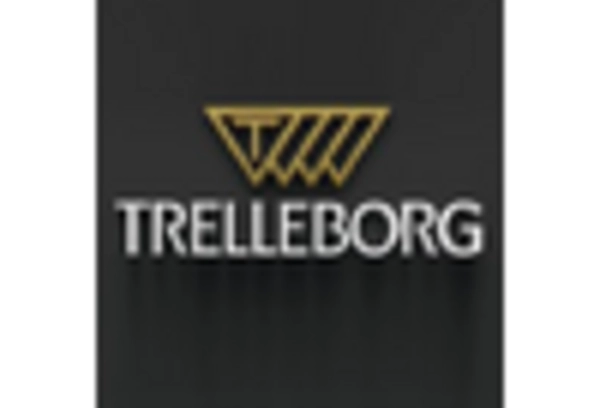

Leave a Comment